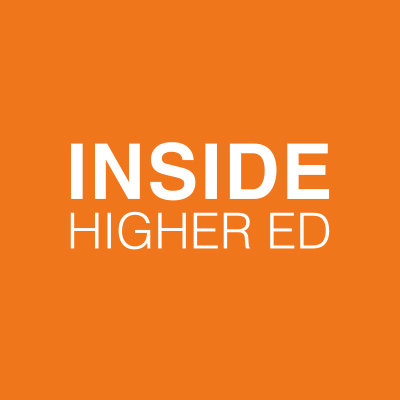
Inside Higher Ed
April 18, 2022 Student Success, Value and Affordability
A positive impact of the pandemic for many students has been access to post-secondary cost savings and financial aid, made possible through federal grants and institutional aid programs. Many institutions waived fees, temporarily eliminated charges for some services or forgave outstanding balances. It’s evident cost-saving measures for students, especially for first-generation, Indigenous and students of color need to continue.

Inside Higher Ed
March 22, 2022 Student Success, Value and Affordability
Scholarships for students suffering with psychological disorders have proliferated in recent years. Often funded by donors who lost loved ones to mental illness, the scholarships range in eligibility and criteria. Such scholarships can be particularly useful because students with mental health needs may face unique financial barriers when attending college.

Inside Higher Ed
March 17, 2022 Student Success, Value and Affordability
When students are in crisis, they often connect with academic advisers, professors, resident assistants or student affairs staff. As such, these points of contact must be aware of financial wellness resources, such as emergency financial assistance and proactive financial literacy information, to assist students. A one-stop model focused on student financial business can make finding assistance and information more streamlined for students.

Inside Higher Ed
March 10, 2022 Enrollment Management Trends, Student Success
The stigma of incarceration often complicates admissions, membership in academic organizations and professional licensure. It follows people throughout their work and personal lives. Formerly incarcerated students have faced uncertainty with applying to graduate programs and securing internships. This uncertainty also extends to the faculty ranks.

Higher Ed. Dive
February 24, 2022 Pre-College Outreach, Student Success
According to a report by ACT, nearly half of the high school graduating class of 2021 reported disruptions in college preparation activities. The pandemic most significantly affected students’ campus visits and college fair attendance. Low-income students, and those who are Hispanic/Latino and Asian were more likely to report disruptions.

Higher Ed. Dive
February 10, 2022 Student Success, Value and Affordability
The jobs crisis has been top of mind for employer-facing interest groups. The pandemic also put the spotlight on worker retraining, especially after mass layoffs. The US House of Representatives passed am omnibus bill Feb. 4. The amendments would make Pell grants available for rapid retraining programs and provide accurate and timely information to drive better decisions.

Inside Higher Ed
February 03, 2022 Enrollment Management Trends, Student Success
A new report from the National Student Clearinghouse Research Center found the six-year college completion rate hit 62.2 percent, but experts say it’s still too low for underserved students. The largest gain was among community colleges at 42.2 percent. Public four-year institutions had the second largest gain, followed public two-year institutions and private non-profit four-year institutions.

Inside Higher Ed
January 05, 2022 Student Success, Value and Affordability
The pandemic illuminates the issues faced by low-income, first-generation or racial minority students. Students face issues like affordability, maintaining their enrollment status, and other academic and personal concerns. Colleges face structural barriers that drive inequity, including the pandemic and a long-overdue racial reckoning. Universities use continuous improvement to improve affordability, teaching and learning, and holistic student support.

Higher Ed. Dive
December 02, 2021 Student Success, Value and Affordability
A new survey of “disengaged learners” found financial reasons to be the top cause for stepping away. The longer a former student stays away, the less likely they are to reenroll. Reaching personal goals are a deciding factor for returning students. More than half of respondents were full-time employees in the retail or food industry, with a yearly household income of $50,000 or less. Institutions can offer the following to entice students to return: certificates for credits earned, less expensive classes, workshops to address students’ problems, counseling and help through concierge services.

Inside Higher Ed
August 20, 2021 Enrollment Management Trends, Student Success, Value and Affordability
Withholding college credits from students because of outstanding balances has long-lasting negative effects on students, especially low-income students and students of color. Authors of a study argue that withheld transcripts are a racial and socioeconomic equity problem that delays or prevents students from graduating. It also hinders career opportunities that would help them earn enough money to pay their institutional debts. Universities are exploring alternatives to tackle this problem.